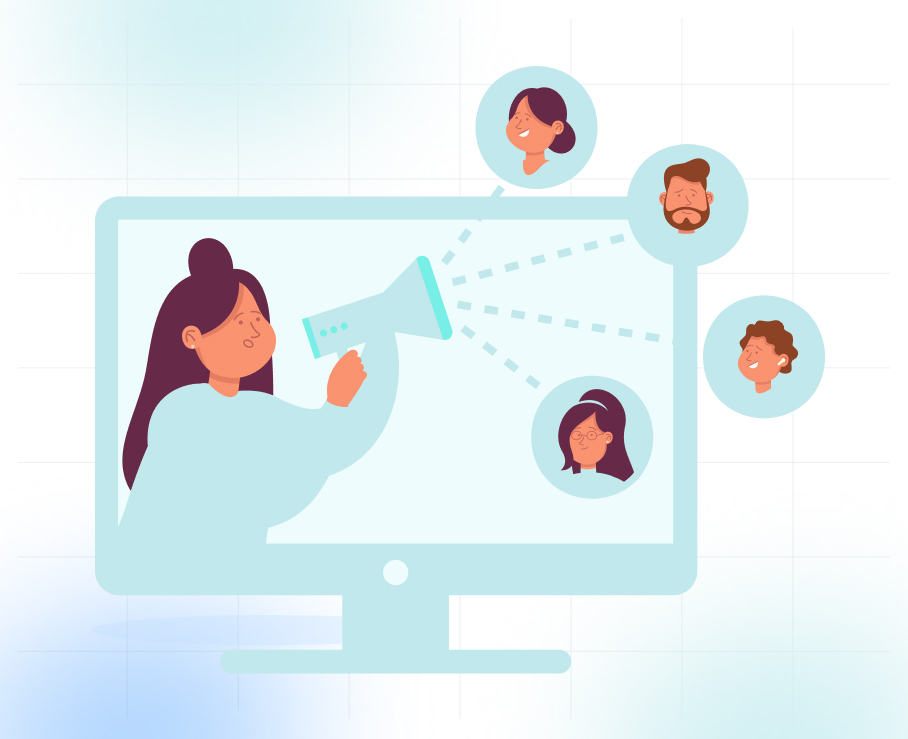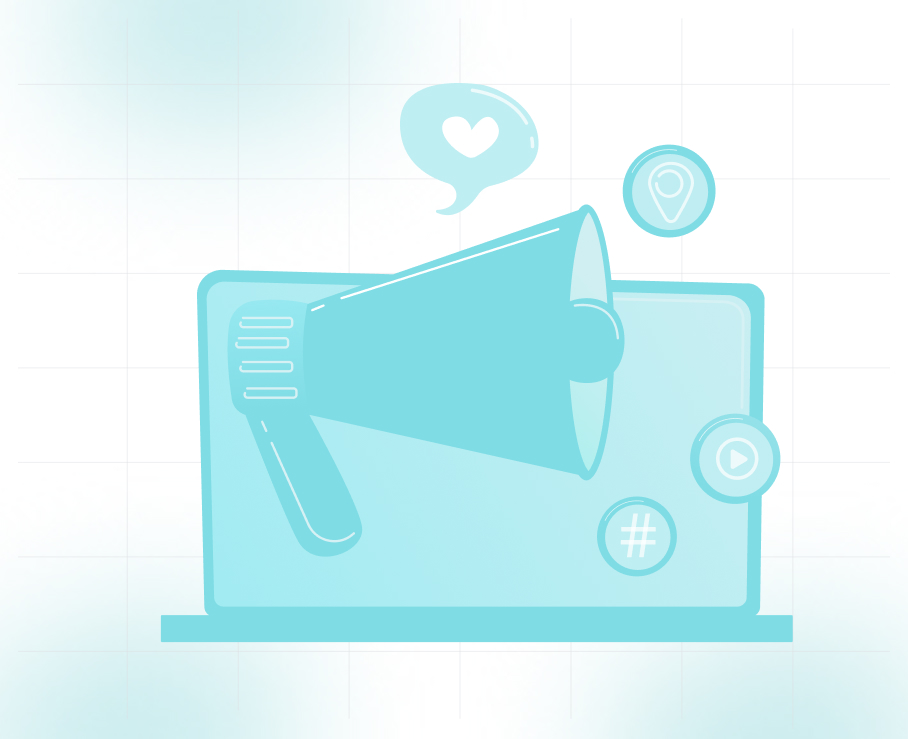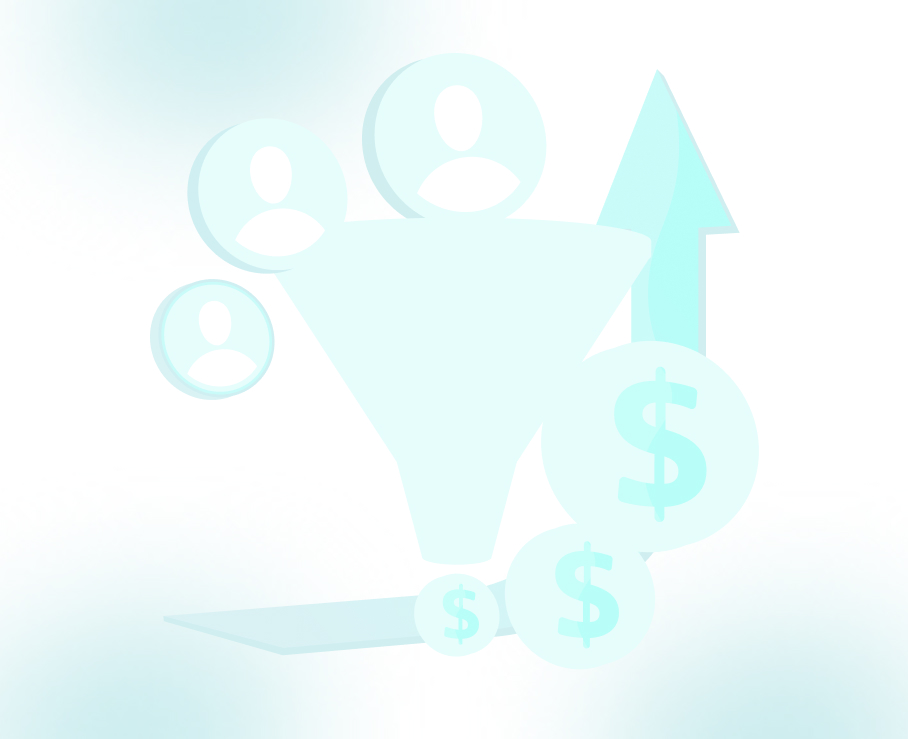
How to Create Effective B2B Buyer Personas with Examples
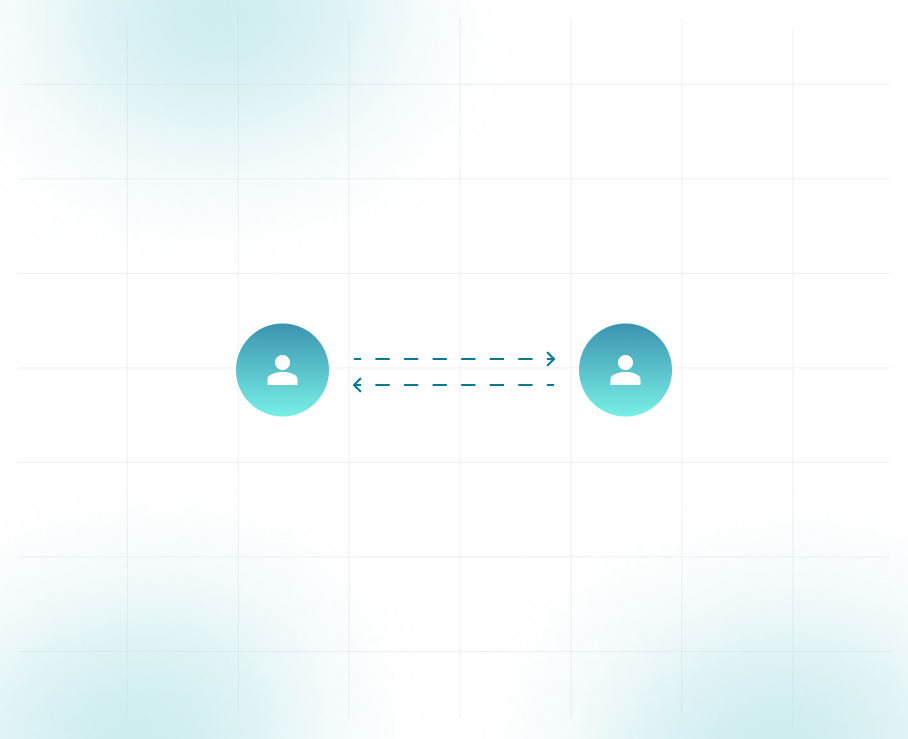
When it comes to B2B marketing, getting noticed by the right audience is crucial. With so many companies vying for attention, the key to standing out lies in understanding exactly who you're trying to reach. That's where buyer personas come into play. These personas aren't just a set of data points; they represent your ideal customer, helping you connect with the right people in the right way.
And the results speak for themselves: using buyer personas in your email marketing can increase click-through rates by 14% and boost conversion rates by 10%, leading to 18 times more revenue compared to generic email blasts. In this guide, we’ll walk you through how to create effective B2B buyer personas, why they’re essential for your marketing strategy, and share some real examples to help inspire your approach.
TL;DR:
- B2B buyer personas drive personalized marketing, improving engagement by 14%.
- They help improve targeting and refine content to resonate with ideal customers.
- Understanding negative personas saves resources by focusing efforts on qualified leads.
- Personas guide sales teams, increasing relevance in conversations and boosting conversions.
- Continuous refinement of personas ensures effective long-term marketing strategies.
What is a B2B Buyer Persona?
A B2B buyer persona is a semi-fictional profile that represents your ideal customer within the context of a business-to-business environment. These personas are built using real data and insights from your existing customers, research, and feedback.
Rather than making assumptions about who your audience is, personas allow you to speak directly to the specific needs, goals, and challenges of those you want to reach. Think of your B2B buyer persona as the foundation of your marketing strategy. When you know your audience inside and out, your content, messaging, and outreach become that much more effective.
To create a persona, you pull information from several sources:
- Customer interviews and surveys: Getting direct insights from people who already use your products.
- Sales and customer support feedback: Your internal teams often have a goldmine of data about what works and what doesn’t.
- Website and social media analytics: See how potential customers are engaging with your content online.
- Market research: Understand industry-specific trends that can inform your strategy.
With these insights, you can create a persona that aligns with your ideal customer, giving you a clear direction for your marketing efforts.
What is a Negative Buyer Persona?
In addition to defining your ideal customers, it's equally important to understand who is not a good fit. This is where negative buyer personas come into play.
A negative buyer persona is a profile of someone who isn’t likely to buy your product or service. These are the leads that waste your sales and marketing team’s time and resources.
Examples of negative buyer personas could include:
- Prospects that are too advanced for your solution (e.g., larger companies that need an enterprise-level solution when you offer something for SMBs).
- High-maintenance leads who aren’t likely to convert but continually demand attention.
- Content consumers who engage with your content purely for educational purposes but have no intention to make a purchase.
Knowing who to avoid can save you time, money, and effort, helping you focus on leads that are a better fit for your business. This also ensures that your team is not wasting time on unqualified leads, which can significantly increase your efficiency and return on investment (ROI).
Also Read: Improving Conversion Rates with Automation: Key Strategies
Ideal Customer Profile (ICP) vs. B2B Buyer Persona
While both ICP (Ideal Customer Profile) and B2B buyer personas are used to help identify the right audience, they serve different purposes.
- Ideal Customer Profile (ICP): The ICP represents the type of business that will benefit most from your product. It’s a broader, firmographic description that includes factors like company size, industry, revenue, and location. The ICP helps you identify which businesses should be prioritized for outreach. It’s essential for building the initial target list, especially for Account-Based Marketing (ABM) campaigns.
- B2B Buyer Persona: While an ICP focuses on company-level characteristics, a B2B buyer persona drills down into the specific individuals within those companies. A buyer persona includes detailed information about decision-makers' goals, challenges, job responsibilities, buying behaviors, and motivations. It gives you a clearer, more actionable profile of who to target within those companies.
An ICP can help you find the right companies to target, while a buyer persona will help you connect with the individuals within those companies. The two work hand-in-hand, and understanding both will allow you to create better-targeted content and sales strategies. By defining your ICP and then refining that through buyer personas, you ensure that your team is focusing on the most valuable prospects.
Why You Need a B2B Buyer Persona?
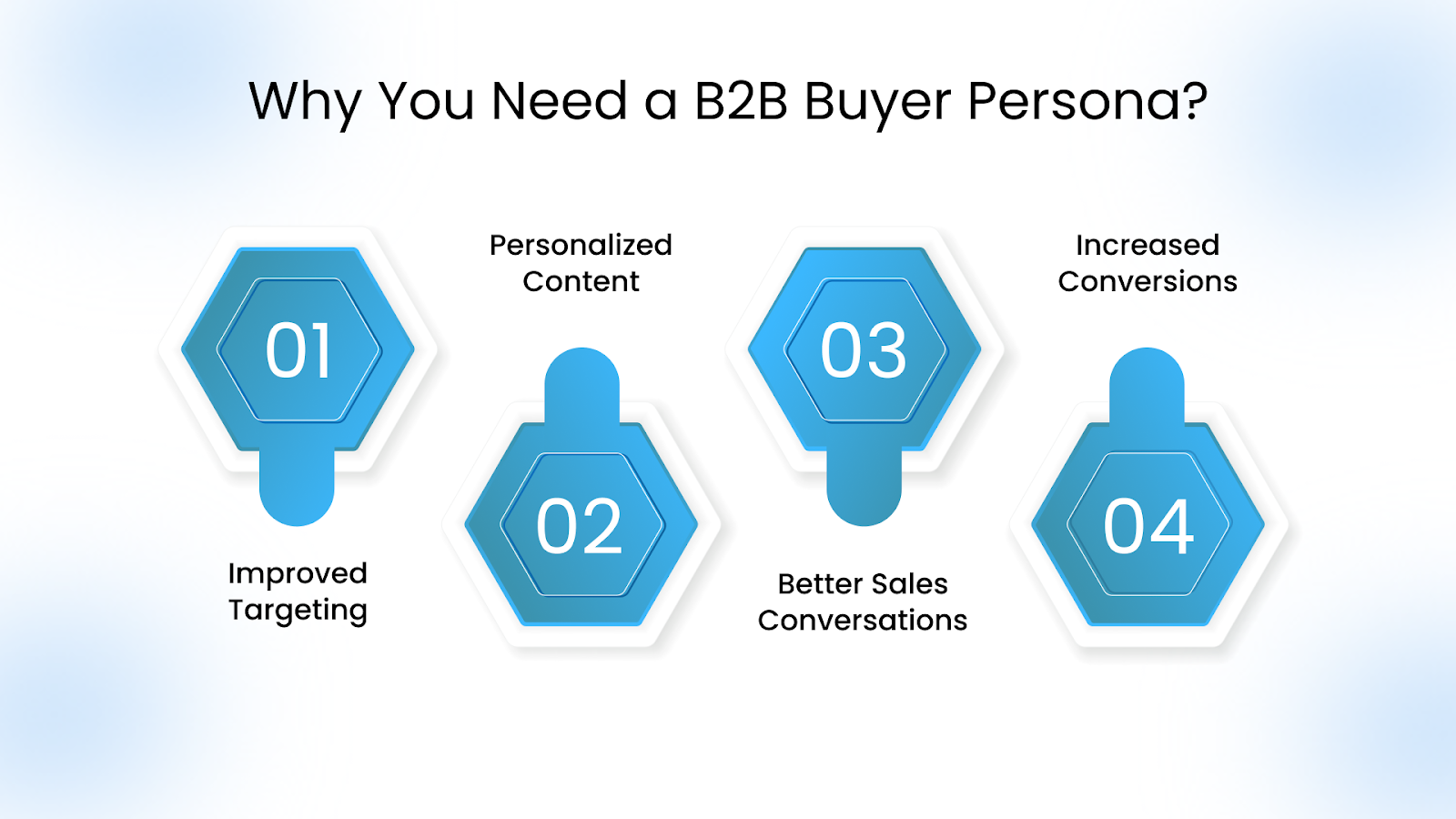
Now that we know what a B2B buyer persona is and how it fits within your strategy, let’s talk about why they are so essential for your business.
- Improved Targeting: Buyer personas help you narrow down your focus to those prospects who are most likely to engage with your brand and make a purchase. By identifying your ideal customer’s specific needs, behaviors, and characteristics, you avoid wasting efforts on broad outreach that won’t yield results.
- Personalized Content: Once you understand who your target personas are, you can create personalized content that resonates with their pain points, goals, and motivations. This includes blog posts, whitepapers, email campaigns, and landing pages tailored specifically to their needs, which increases engagement and trust.
- Better Sales Conversations: A clear buyer persona gives your sales team a framework for understanding the needs and challenges of potential clients. By knowing the specific pain points and decision-making factors that are top of mind for your target persona, your sales team can have more relevant and persuasive conversations, moving prospects through the funnel more effectively.
- Increased Conversions: Personalization isn’t just about engagement, it directly impacts conversion rates. When your messaging is highly relevant and addresses the specific challenges of your buyer persona, you’ll find that your leads are more likely to convert into paying customers. It’s not just about reaching prospects; it’s about reaching them with the right message at the right time.
These benefits directly tie into the success of your marketing and sales teams, making buyer personas a critical tool for businesses looking to improve their ROI and conversion rates. They act as a roadmap, guiding your team toward better outreach and more effective communication strategies.
The Anatomy of a B2B Buyer Persona
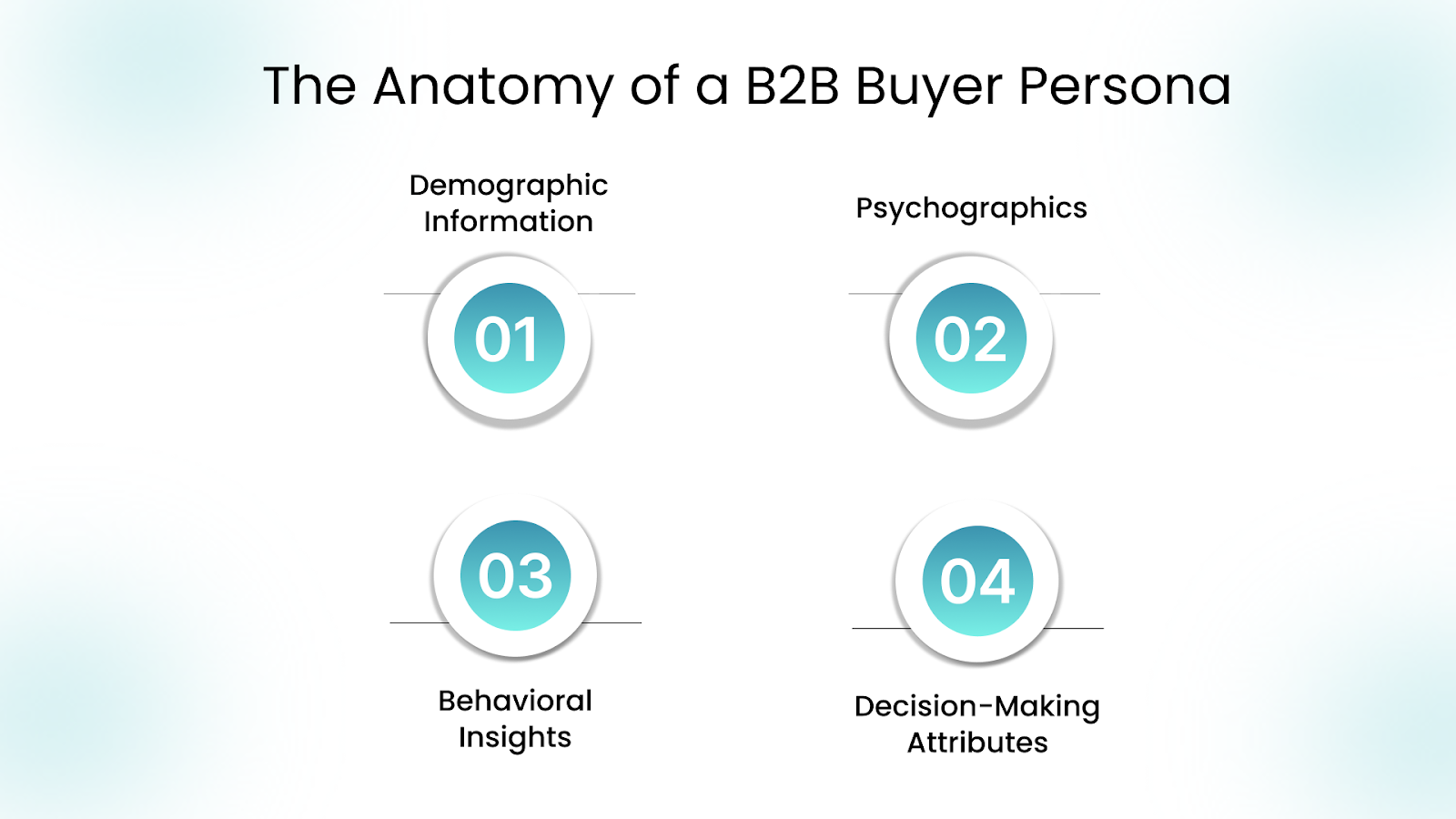
Creating a B2B buyer persona isn’t just about collecting demographics. It’s about crafting a story that’s backed by data. Here are the key components to include in your persona:
- Demographic Information: This is the foundational data that includes the persona’s job title, company size, industry, geographic location, and even their age. These details help you understand the professional background and context of your ideal customer.
- Psychographics: Dive deeper into the persona’s goals, motivations, and pain points. What challenges do they face daily, and what is driving their decision-making process? Knowing what motivates your persona helps you tailor your solutions to address these pain points directly.
- Behavioral Insights: How does your persona engage with your brand? What channels do they use to communicate (email, social media, etc.)? Do they prefer in-depth content like case studies, or are they more responsive to short-form content like blog posts and infographics? Understanding these behaviors helps in delivering content in the right format and on the right channels.
- Decision-Making Attributes: Who influences their decision-making process, and what factors are most important when evaluating products or services? Do they rely on data-driven reports, peer recommendations, or personal experiences? Identifying these factors helps you refine your sales approach and better address objections.
Understanding all these elements allows you to develop content that resonates and speaks directly to the persona’s challenges and aspirations. It’s about more than just pitching your product; it’s about offering solutions to their specific needs.
Also Read: The Best Time to Send Marketing Emails in 2025
How to Create Your B2B Buyer Persona
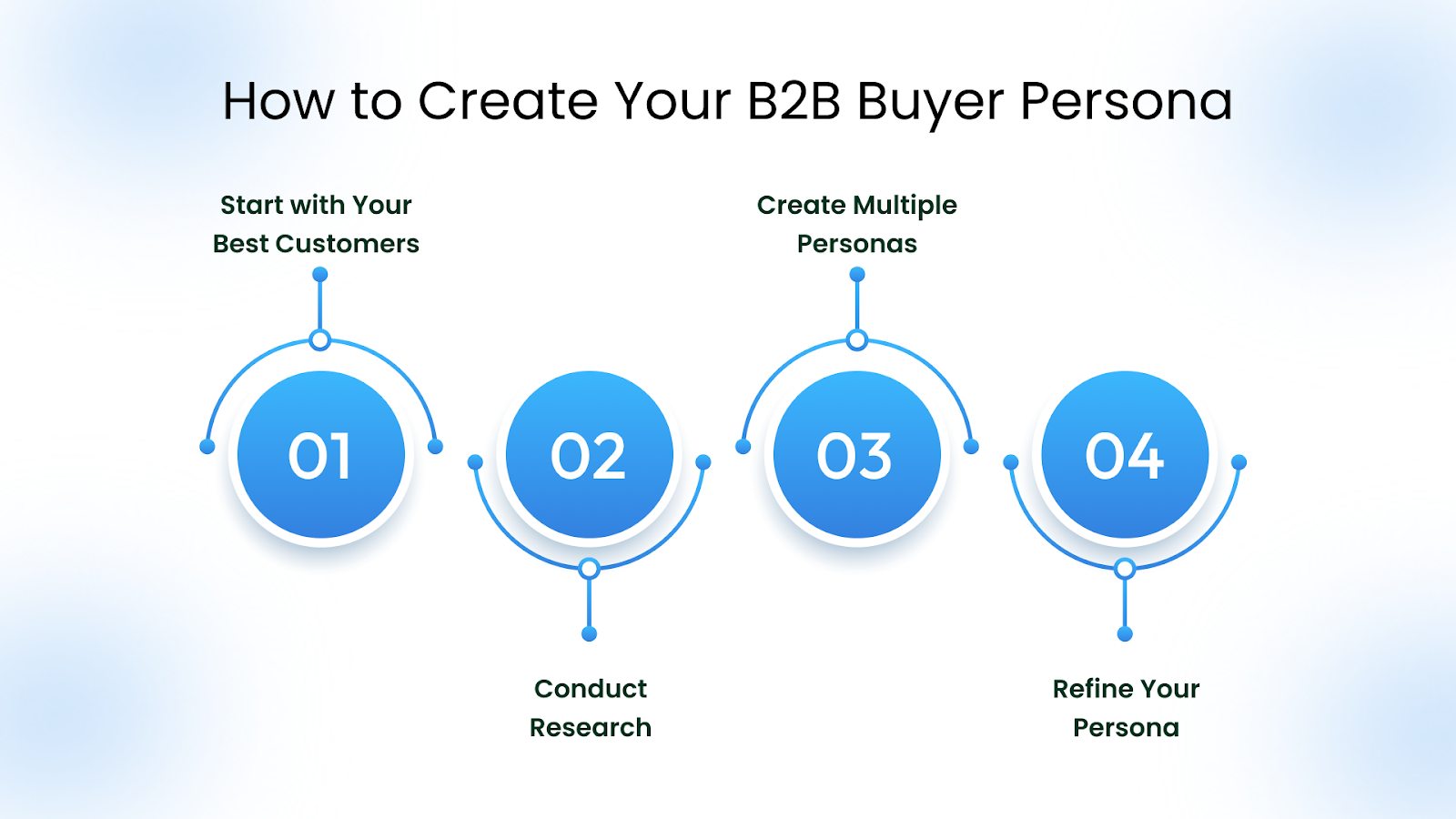
Creating your B2B buyer persona is a process that involves research, analysis, and continuous refinement. Here’s a simple approach to get started:
- Start with Your Best Customers: Begin by analyzing your top-performing customers, those who generate the most revenue and have the highest lifetime value. Look for common characteristics in these customers, including their job titles, industries, pain points, and how they engage with your product.
- Conduct Research: Use surveys, interviews, and feedback from customers, prospects, and internal teams (sales, customer support, etc.) to gather insights into your target audience. This research should go beyond demographics to include psychographics, behavioral patterns, and decision-making criteria.
- Create Multiple Personas: Depending on your business, you may need more than one persona to represent different segments of your target audience. For example, if you're selling software, you might create separate personas for the CTO and the product manager. Each persona should reflect a distinct set of challenges, goals, and decision-making factors.
- Refine Your Persona: Your buyer personas should evolve over time as you collect more data. Use feedback from marketing campaigns, customer interactions, and sales outcomes to refine your personas continuously. The more detailed and accurate your persona, the more effective it will be in guiding your marketing strategies.
The more detailed and up-to-date your persona, the more effective it will be in guiding your marketing strategies.
How to Use Your B2B Buyer Persona
Creating a buyer persona is only useful if it actively shapes how you approach, engage, and convert leads, especially through email. Here’s how to apply your persona to sharpen every step of your email lead generation workflow:
- Sharpen Your Prospect List Before You Send
Most email campaigns underperform because they start with the wrong audience. Use persona criteria to filter your prospecting by job title, company size, industry, pain points, or growth stage. This lets you eliminate irrelevant contacts early, so you're not wasting time (or damaging your domain) on cold, misaligned outreach.
Example: If your persona is a Head of RevOps at a 200+ employee SaaS company, skip small startups or generalist operations roles. Tight targeting = higher open and reply rates.
- Craft Messaging That Mirrors Their Reality
Personas are built around real goals, friction points, and motivators. Use this intel to shape your email copy, not just subject lines, but the entire message arc. Avoid features or jargon. Speak in terms of what this specific person needs to achieve or fix.
Think: “Here’s how RevOps teams are shortening sales cycles without ripping out current tools,” instead of “We help optimize revenue workflows with AI.”
- Personalize Beyond First Names
Surface-level personalization doesn’t cut it anymore. Use persona-driven insights to reference specifics they’ll care about, like the KPIs they own, challenges tied to their role, or current market dynamics. These show you’ve done your homework and build instant relevance.
Example: “We’ve seen VPs of Sales struggling with visibility across remote SDR teams, especially post-Q2. If that’s on your radar, here’s a 2-min read worth scanning.”
- Build Sequences Based on Persona Behavior, Not Guesswork
Map your email cadence to how your persona typically buys. Are they fast-moving and tactical? Send tighter, more frequent sequences. Are they strategic, consensus-driven buyers? Space out emails and build more context with each touchpoint, case studies, industry trends, social proof, etc. - Prepare Sales with Context That Converts
When your email campaigns are persona-aligned, handoffs to sales become smoother and faster. They already know the problem you solve and why you reached out. Sales can then skip generic discovery and focus on tailoring demos or pitches to what the lead already cares about.
Good persona use in lead gen shortens the sales cycle, not just fills the top of the funnel.
- Inform Your Targeting Across Channels
Buyer personas should guide not just who you email, but who you target across ads, webinars, partnerships, and event outreach. Knowing your ideal buyer’s job title, stage of growth, or funding history helps you zero in on high-fit leads wherever they hang out.
Skip broad ICPs. Personas help you get hyper-specific with targeting, so you waste less budget and time.
- Refine Qualification Criteria
Personas help you build sharper qualification rules. You can tighten form fields, update your BANT (Budget, Authority, Need, Timeline) benchmarks, or prioritize leads who match your persona’s buying stage. This filters out noise and keeps sales focused on revenue-ready leads.
More leads ≠ better pipeline. Personas help you chase the right ones.
- Shape Your Product Positioning
If your persona’s biggest blocker is stakeholder alignment or tool fatigue, that should directly shape how you position your product, what pain you solve, and how you communicate differentiation. Personas don’t just influence marketing; they inform how your solution is framed to fit real-world problems.
Buyer personas are not just marketing tools; they’re decision-making frameworks for smarter outreach. When applied to email lead generation, they reduce guesswork, improve open and response rates, and move the right people down the funnel faster. If you’re not actively feeding personas into your messaging, segmentation, and sequencing, you’re just sending educated spam.
B2B Buyer Persona Examples
Here are three B2B buyer persona examples to help you visualize how this works in real life:
- Persona for a Marketing Automation Tool
- Name: Hugo Klein
- Role: CMO at a mid-sized e-commerce company
- Pain Points: Inefficient marketing processes, lack of data insights
- Goals: Improve ROI on campaigns, automate repetitive tasks
- Solution: A Marketing automation tool that streamlines campaigns and delivers insightful data.
- Persona for Big Data Analytics
- Name: Amanda Miller
- Role: Sales Analyst at a financial services firm
- Pain Points: Difficulty presenting actionable insights to leadership
- Goals: Deliver clear and concise reports that drive decisions
- Solution: A Big data analytics platform that visualizes complex data.
- Persona for Accounting Software
- Name: Mark Houston
- Role: Small Business Owner
- Pain Points: Struggles with time-consuming accounting tasks
- Goals: Simplify financial tracking, focus on growing the business
- Solution: Easy-to-use accounting software for small businesses.
Email That Converts: How TLM Helped a B2B Company Reach 2,700 Prospects with Persona-First Campaigns
A family-owned warehousing company offering kitting, assembly, and subscription box fulfillment across the East Coast struggled to convert leads. Their outreach was too broad, lacked personalization, and wasn’t aligned with the actual needs of their ideal buyers, operations managers at scaling DTC brands.
What changed with TLM?
We started by helping them build clear buyer personas, mapping out:
- Titles of their best-fit decision-makers
- Common supply chain challenges in that vertical
- Purchase triggers (e.g., outgrowing 3PLs or handling seasonal overflow)
Using these insights, we built a persona-driven email sequence that spoke directly to their prospects’ bottlenecks, from inventory delays to poor 3PL communication. The result?
- Reached 2,700 prospects in 4 weeks
- Booked 11 sales appointments
- Closed 8 new accounts
- 22 warm leads continued into nurturing workflows
No spam. Just better targeting powered by sharper personas.
TLM’s approach extends far beyond just generating leads. Our B2B email marketing services are crafted to drive sustainable growth by targeting the right audience, personalizing the outreach, and continuously optimizing every interaction.
Here’s how TLM can elevate your B2B lead generation efforts:
- Targeted Lead Generation: We craft precise email lists using advanced segmentation, ensuring your message reaches the right audience.
- Personalized Campaigns: Generic emails are a thing of the past. We tailor each email to resonate with the specific needs of your audience, improving engagement and conversions.
- Automated Appointment Scheduling: We streamline scheduling, so your sales team spends less time chasing leads and more time closing deals.
- Account-Based Marketing (ABM): For high-value clients, we use customized strategies to engage key decision-makers and accelerate sales.
- Data-Driven Optimization: Our in-house analytics tools track campaign performance, allowing us to refine strategies for better results continually.
Buyer personas are the foundation for any successful B2B strategy. By continuously refining them, you can ensure that your messaging, lead generation, and sales processes are laser-focused on what matters most to your customers, driving long-term business success.
With TLM’s expertise, email marketing becomes a powerful tool to enhance your lead generation, nurture prospects, and drive sustainable growth.
FAQs
1. What are B2B Buyer Personas?
A B2B buyer persona is a semi-fictional representation of your ideal customer in the business-to-business space. It’s based on real data from your existing customers, research, and feedback, and helps you understand your target audience’s needs, goals, and pain points.
2. What are the 4 Types of B2B Buyer Personas?
The four main B2B buyer personas are:
- Decision-Maker: The person who makes the final purchase decision, often a senior executive.
- Influencer: Someone who influences the decision, typically with expertise or insights.
- End-User: The individual who directly uses the product or service and provides valuable feedback.
- Gatekeeper: The person who controls access to decision-makers, often handling initial research or filtering options.
3. What is a Negative B2B Buyer Persona?
A negative buyer persona represents the type of customer who is unlikely to convert or benefit from your product or service. These are prospects who take up valuable time and resources but don't fit your ideal customer profile.
4. How Often Should I Update My B2B Buyer Personas?
Buyer personas should be reviewed and updated regularly, at least once a year or whenever there are significant changes in your market or target audience. As trends, challenges, and buyer behaviors evolve, your personas should reflect those shifts to remain relevant and effective.


